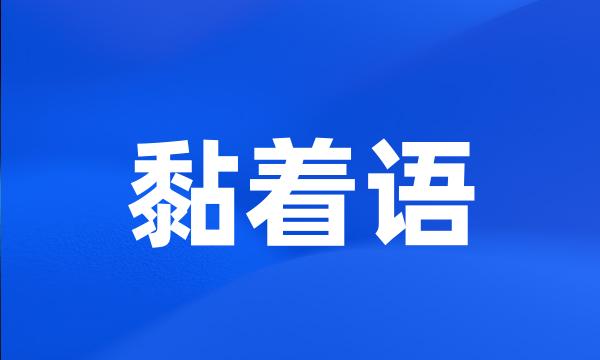黏着语
- 名agglutinating language;bound morpheme
 黏着语
黏着语-
由于蒙古语属于黏着语,它的构词和构形都是以词根、词干上连接不同的词缀来完成的,从句子的基本语序看,属于SOV(主宾谓)型语言。
From the view of the basic word order sentences , Mongolian is belong to SOV ( guest of honor that ) type language .
-
朝语和日语同属于黏着语,都使用相似的助词。
Korean and Japanese languages belong to the same agglutinative language , using a similar particle .
-
韩国语是黏着语,大部分的语法内容都是通过助词和词尾等形式来表达的。
Korean is a kind of adherent language that most grammatical information is expressed by auxiliary word and termination .
-
韩语属于黏着语,汉语属于分析语。
Korean language belongs to the category of agglutinative language , while Chinese language is a kind of analytical language .
-
维吾尔语是黏着语,它的构词手段主要是在词根和词干上附加构词词缀。
Uyghur language is an agglutinative language , its main method of word-formation is adding word-forming suffixes to roots and stems .
-
传统语言学中,格是指一些黏着语和某些屈折语名词和代词的形态变化,而语义学中所指的格是体词和谓词之间的及物性关系。
In traditional linguistics , " case " indicates the morphological change of some agglutinative languages and inflecting languages . But in semantics , " case " indicates the transitive relationship between substantive words and predicative words .
-
蒙古语是黏着语,形态变化丰富,词内有专门表示语法意义的词缀,名词在语法方面有数、格、领属等范畴。
Mongolian is sticks together the language , the shape change is rich , in the word has the specially expression grammatical meaning affix , The noun knows how things stand , categories and so on standard , ruler and subordinate in the grammar aspect .
-
蒙古语是阿尔泰语系的黏着语,形态变化发达的一种语言,蒙语由构词由词根、词缀和词尾组成没有前缀和中缀,只有后缀,蒙语没有介词,只能用蒙语语义格词缀对应使用汉语介词。
Mongolian word formation consists of roots , affixes . Suffixes Mongolian languages does not have an infix and prefix , only have an suffix . Mongolian languages do not have prepositions , only using Mongolian semantic grid affixes correspond to the usage of Chinese prepositions .
